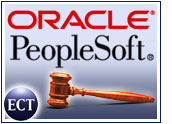
The future of the digital music industry is of vital import to a company like RealNetworks, which provides the RealPlayer platform for delivering digital media across a multitude of devices. RealNetworks also delivers subscription music through its digital jukebox, Rhapsody, and has just opened a download store.
Such an array of tactics is what it takes to conquer the growing digital music market. RealNetworks’ vice president of music services, Sean Ryan, spoke with the E-Commerce Times recently about his company’s strategy to become king of the hill.
E-Commerce Times: The online music industry is still very young, even by e-commerce standards. When did it really start to take off?
Sean Ryan: I’d say about two years ago, [with] the rise of legitimate services that had improved pricing, improved portability and better content relationships. Before that, there were a few very frustrating years where we saw a variety of problems, like the content holders not being on board and broadband not being adopted. But now there’s much more traction.
ECT: What was the biggest driver of that newfound traction?
Ryan: I’d say it was broadband. It’s continued to improve, consumers are more comfortable with it, and that’s made a big difference. We’ve also seen benefits from better home networks and better consumer electronics. Piracy has been beaten down a little bit as well. So, all of these trends are converging in a way that’s very good for the industry, and I think 2004 will be an exciting year.
ECT: Are there any worries that the copyright laws of different countries and the continuing actions of pirates will affect the industry?
Ryan: I think there will always be a certain amount of piracy. What we need to focus on is improving rights and offering compelling portability and pricing alternatives. Three years ago, rights and prices didn’t make sense, and piracy was widespread. I think that’s improved, so now what we should look at is enforcement of copyright law throughout the world. It’s a significant issue that there are different copyright laws, but I think the situation will gradually change.
For example, with China, I think you’ll see that they’ll change to be more in line with the rest of the world. It’s very normal for countries to want to protect their rights more as they evolve. We’re not quite yet a global economy, but the Internet is forcing these issues to the forefront, where they’ll eventually have to be addressed.
ECT: As the industry gets more attention and attracts more consumers, it seems that startups are bound to proliferate. Do you think that the presence of more companies in the marketplace will help or hurt?
Ryan: I definitely think you’re going to see some fragmentation as so many new players enter the marketplace. The problem is that with a lot of companies comes a plethora of options in terms of music delivery, and that may be confusing for the consumer. We think there’ll be a shakeout in the next year as leaders in the space develop different types of options for delivery and start to attract a larger percentage of music customers.
ECT: With more companies, will there also be more models and strategies about how to handle digital music?
Ryan: Yes, I think we’ll see more models, although the two major ones — subscription and a la carte — will still dominate. Each will be important, because they appeal to different audiences. The subscription model is for the consumer who’s online often and wants access to hundreds of thousands of tracks. But there’s also the consumer who wants to download a few tracks to a player so they can listen while they’re jogging, for example. For those consumers, a download store makes more sense. That’s why we launched our own store, so we could reach both types of consumers.
ECT: What does your store have that other online music stores lack? How do you differentiate it from competitors?
Ryan: For one thing, we find that as consumer electronics get better, there’s more demand for better-quality music. Because we’re offering very high-quality music with a higher bitrate, we think that will be a major reason that it will be successful.
Also, when we first thought about launching a store, we looked around at what there was, and we found the buying experience to be bland. We wanted to have a look and feel that would pull you in and allow you to browse. Rather than just have albums online, we wanted a place that says, “Sit down, hang out, see what else we have to offer.”
It’s like the difference between buying music at KMart and buying music at Borders. With our store, we feel like we’re different because we have a different experience, and we feel that’s more important than just features. Also, the store is tied into RealPlayer 10, which will have massive distribution. That sure doesn’t hurt.
ECT: What kinds of challenges did you encounter while you built the store?
Ryan: We built it from a lot of the assets that we had for Rhapsody, but this is a different type of audience, a more casual audience that’s interested in top 100 music, so we had to focus on how to make bigger-name content rise to the top.
We also focused heavily on simplicity, which is something we always care about. Digital music can be very confusing, and when you build something like a store, you have to think about how to make the experience simple enough that the consumer can get a huge range of content without getting lost.
ECT: How will stores like this and others like it affect the industry as a whole?
Ryan: It’s really exciting from an e-commerce perspective. This is one of the first digital-medium markets that’s bringing micropayments to the forefront and really driving e-commerce. This year, we’ll see 16 million transactions and tens of millions of dollars coming in, and that’s significant. I think micropayments haven’t quite gotten there yet as a model, but we’re seeing more progress as people are more connected and they get more comfortable with doing transactions that are less than a dollar.
























































Social Media
See all Social Media